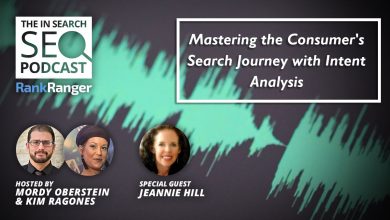Website Users Prefer More Ads, According to Search Engine Journal’s Ad Experiment-SEO

Search Engine Journal conducted an experiment to find out how many ads are too many to show on a web page and if users spend more time on the site with fewer ads, which delivered unexpected results.
Highlights
- Search Engine Journal used a sample size of 100,000+ Canadian visitors to conduct ad type and ad density experiments.
- A variety of ad types were shown to users to find out which types of ads were preferred based on engagement metrics.
- Several ad densities were analyzed to discover how many ads could be shown on the site before it negatively affected engagement.
Search Engine Journal (SEJ), a leading resource for search news and best practices, tested the impact ads have on its website users. The goal of the experiment reported here was to find out how many ads are too many on the page and if users spend more time on the site with fewer ads.
Search Engine Journal cited a recent WARC report in its public case study that found 53% of survey respondents felt that “too many ads” could damage a brand. In the SEO and niche site communities I participate in, there is also much debate about whether displaying too many ads on a site harms the user experience; resulting in lower session times, higher bounce rates, and a lower number of returning users.
However, the results from SEJ’s two-phase experiment on ad density and user behavior were unexpected:
- Experiment #1 showed that users spend more time on the SEJ site when there is a mix of ads—both SEJ brand ads and programmatic ads.
- Experiment #2 showed that user engagement increased with more ads on the page.
The results of these SEJ ad experiments seem counterintuitive, but the data reveals an important lesson: just because people think more ads are bad for the user experience, doesn’t make it true. Also, sticking to just brand-only ads on a website may not provide the best user experience either.
Ad Experiment #1: Which Ads Do Users Prefer?
SEJ Hypotheses
- When only SEJ brand ads are visible, user engagement will increase. More time will be spent reading, scrolling further through the content, and visiting more pages on the site.
- When only programmatic ads are visible, user engagement will decrease. Less time will be spent reading, scrolling through the content, and visiting fewer pages on the site.
Testing Procedure
Randomly divide the SEJ Canadian audience (sample size of 100,000+) into one of three groups:
- Group 1 (Programmatic Ads): Users only receive programmatic ads when visiting the SEJ site.
- Group 2 (SEJ Brand Ads): Users only receive SEJ brand ads promoting its webinars and ebooks.
- Group 3 (Control Group): Users received both ad types.
Results
| Pageviews | Average Time On Site | Bounce Rate | Article Reads | 3 Pages Per Session | |
|---|---|---|---|---|---|
| Group 1 | -14.21% | +5.14% | +3.06% | -29.47% | -45.45% |
| Group 2 | -17.69% | -4.22% | -1.29% | -15.26% | -63.64% |
The data shows that the SEJ sample set of users spent more time reading content when they saw a mix of ads. Users receiving only one type of ad spent far less time reading through the articles and visiting multiple pages per session. This was the case even when the average time on site and bounce rate improved for Group 1 visitors who only saw programmatic ads.
Ad Experiment #2: Do Users Prefer Fewer Ads?
SEJ Hypothesis
Fewer ads on the SEJ site will improve the user experience, leading to an increase in pageviews, the average time on site, and the number of returning users.
Testing Procedure
Randomly divide the SEJ Canadian audience (sample size of 100,000+) into one of three groups:
- Group 1 (High Intrusive Ads): This ad layout serves as the control group where visitors receive the standard number of ads throughout the content, the top navigation bar ad, the footer ad across the bottom of the browser, the two sidebar rail ads, and pop-up ads.
- Group 2 (Medium Intrusive Ads): This ad layout removes the most intrusive ads on the SEJ site. Visitors only see ads above and below the content, the top navigation bar ad, the footer bar ad, and the two sidebar rail ads. Ads throughout the main body of the content and pop-up ads are removed.
- Group 3 (Low Intrusive Ads): This ad layout shows the bare minimum number of ads on the SEJ site. Visitors only see ads above and below the content, the top navigation bar ad, and one of the sidebar rail ads. All other ads, including the in-content ads, footer bar ad, and pop-up ads are removed.
Results
| Pageviews | Average Time On Site | Bounce Rate | Article Reads | 3 Pages Per Session | |
|---|---|---|---|---|---|
| Group 2 | 0.00% | +12.56% | +6.17% | -50.00% | -23.08% |
| Group 3 | -4.21% | +11.42% | +3.48% | -50.00% | -11.54% |
The data shows that the SEJ sample set of users read less content overall when there were fewer ads on the site. This was the case even when the average time on site and bounce rate improved for both testing groups with fewer ads than the Group1 (the control group).
SEJ is unsure about the exact reason why its users preferred more ads on the page, but they do have some theories. You can read about those theories in the full write-up of the ad experiment here: How Do Ads Affect Website Visitor Behavior? (SEJ).
Summary
Search Engine Journal’s ad density experiment on user behavior provided evidence that fewer ads resulted in a decrease in engagement among its Canadian audience and serving both SEJ brand ads and programmatic to visitors improved engagement rates.
The results of the tests were unexpected based on SEJ’s hypotheses and the general consensus among the SEO and niche site communities where a majority of people think more ads lead to worse user engagement.
The important takeaway from this SEJ ad experiment is clear: it is worth testing the ad density and ad types on your own website to find out how many ads, and which variations, will drive the most revenue for your business without harming the user experience. Not all sites will see the same results as SEJ’s experiment, and not all audiences will behave similarly.
Stephen Hockman is an entrepreneur and founder of SEO Chatter. He specializes in search engine optimization and digital marketing and has been fascinated with SEO since 2005. His goal is to share the best tips and news about search engine marketing to help you get more website traffic.
Please enable JavaScript
#Website #Users #Prefer #Ads #Search #Engine #Journals #Experiment





